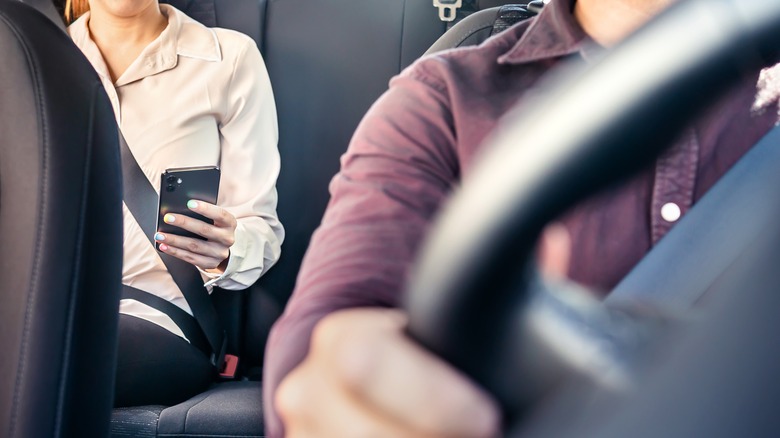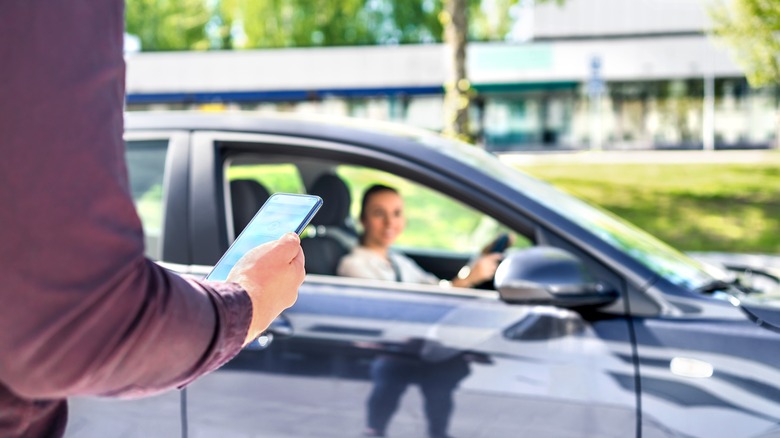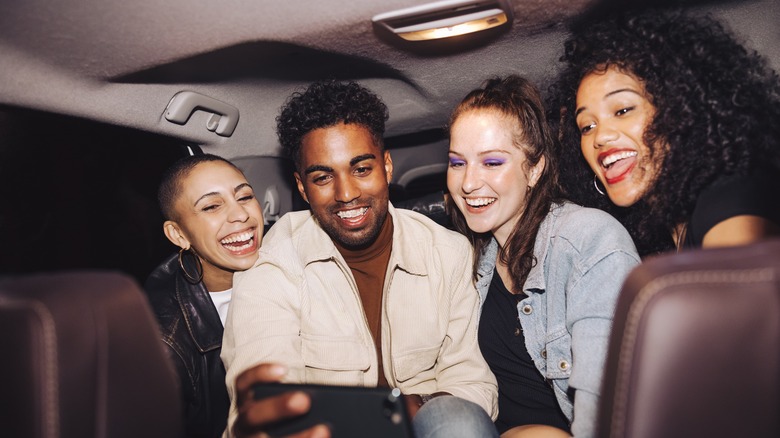Ride-Share Surge Pricing Explained (And Smart Tips To Avoid It)
Whether you've needed a ride from the airport, a lift to work, or a way home after a late night out, rideshares have become a ubiquitous mode of travel for many of us. Popular rideshares, such as Uber and Lyft, offer a convenient and usually budget-friendly way to get around, though "usually" is the operative word. Most of us have paid way more than expected for a ride home after a concert or as the bars let out, and this less-than-welcomed surprise is due to one rideshare policy — surge pricing.
Rideshares react to the same market forces as hotels and airlines, which rely on dynamic pricing models to set prices. As hotels get increasingly booked or airplane seats become increasingly scarce, the price goes up. Rideshares follow the same supply-and-demand pricing model.
Whether it's during rush hour, after a sporting event, or around last call, a spike in demand for rideshares creates a surge in prices. If you're someone who frequently relies on rideshares, these surges can add up quickly. Fortunately, there are a couple of ways to avoid price surges while still catching your ride.
Plan ahead to avoid price surges
The easiest way to avoid surge pricing is to avoid requesting a rideshare during peak demand times. But this isn't always a solution. If you're requesting a ride during peak times, you probably need a ride for the same reason as everyone else. That said, price surges may only last a few minutes, so prices may go back down after walking through a big parking lot or grabbing a late-night slice. However, if you're trying to catch a ride after a major event or during a holiday, this approach probably won't work. The surge may last for an hour or longer.
While patience and flexibility may help, a little planning and forethought can ensure you avoid price surges. If you schedule a rideshare in advance versus requesting an on-demand ride, you'll receive a price estimate that won't be affected by any dynamic price changes. When requesting an Uber, for example, you need to reserve a ride at least an hour in advance, though you can actually reserve an Uber 30 days prior to your ride. If you can estimate when you're concert will end, then go ahead and book a ride in advance.
Consider downloading the driver app
Along with waiting out price surges, you can also outmaneuver them. If you're a dedicated ride-hailing passenger who appreciates a good hack, consider downloading the rideshare driver's app. No, you don't need to actually drive to become a driver. With access to the driver's app, you'll be able to see a heatmap of ride-hailing activity.
Typically, the driver's app shows different areas experiencing price surges, and these in-demand areas may only consist of a few blocks. If you've downloaded the driver's app, you can simply follow the map to walk into a nearby zone without a pricing surge. After switching from your driver profile to your rider profile, you can now request a less expensive ride.
Whether you wait out price surges, schedule rides in advance, or choose to infiltrate driver maps, a little planning and know-how can prevent your "getting around" budget from careening.


